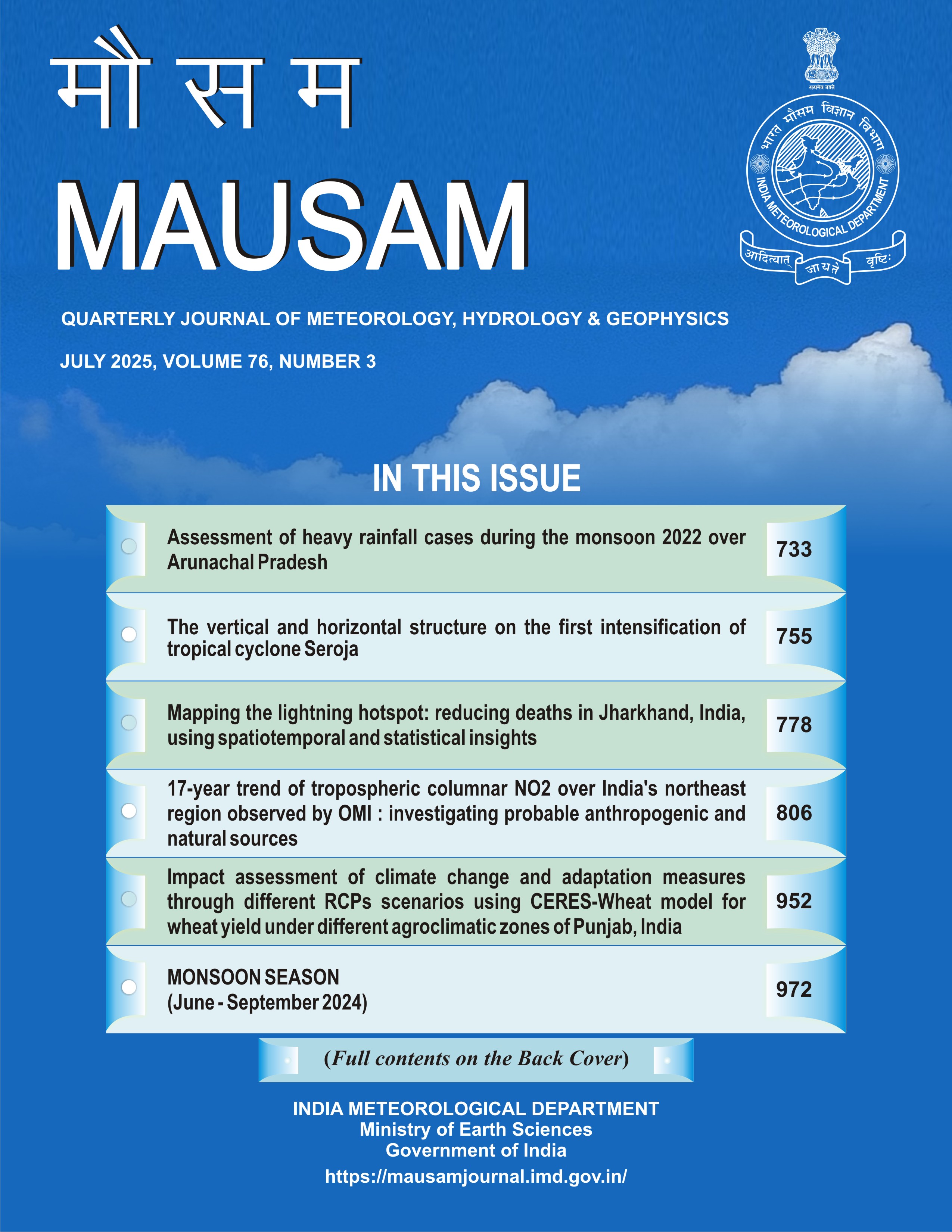Analysis of CO2 over Hubei of China in the first round of COVID-19 scenarios
DOI:
https://doi.org/10.54302/mausam.v76i3.6265Abstract
As global warming intensifies and extreme weather events become more frequent, the concentration of carbon dioxide (CO2) in the atmosphere has become a major concern worldwide. The COVID-19 pandemic, which began at the end of 2019, led to significant restrictions on human activities, resulting in changes of greenhouse gases’ concentrations. CO2 Data from GOSAT satellite and COVID-19 data during the first wave of the pandemic in Hubei, China, were analyzed.CO2 concentration during the outbreak of COVID-19 decreased by 1.54 ppm, an unprecedented decline in previous years. The reduced value of the CO2 concentration in Hubei province ranked second among the 34 provinces in China, only second to Taiwan province. After the outbreak was under control, CO2 concentration gradually returned to normal levels. The restrictions on resident mobility and industrial production led to a significant drop in electricity consumption across the primary, secondary and tertiary industries, while residential electricity consumption increased substantially, resulting in a rise in fossil CO2 emissions from the residential sector. However, emissions from power generation, industry, transport, public services, and aviation all significantly decreased. As the pandemic subsided, these trends began to recover.
Methane (CH4) concentrations were also analyzed in this study. In February 2020, CH4 concentration decreased by 4.76 ppb, marking the largest decline during the pandemic and reflecting the most severe stage of the outbreak in Hubei. Furthermore, compared to the methane concentration increments in March 2019 and March 2021 (1.21 and 1.06 ppb, respectively), the increment in methane concentration in March 2020 was -0.23 ppb, which was lower than the increments observed in the previous and following years. Similarly, CH4 showed substantial fluctuations, with the largest drop observed during the peak of the COVID-19 crisis, followed by a recovery as the pandemic situation improved.
Downloads
Published
How to Cite
Issue
Section
License
Copyright (c) 2025 MAUSAM

This work is licensed under a Creative Commons Attribution-NonCommercial 4.0 International License.
All articles published by MAUSAM are licensed under the Creative Commons Attribution 4.0 International License. This permits anyone.
Anyone is free:
- To Share - to copy, distribute and transmit the work
- To Remix - to adapt the work.
Under the following conditions:
- Share - copy and redistribute the material in any medium or format
- Adapt - remix, transform, and build upon the material for any purpose, even
commercially.



